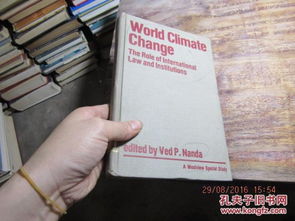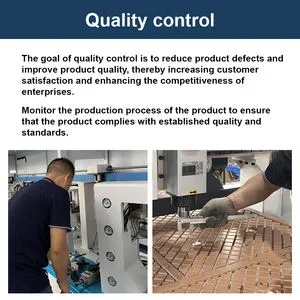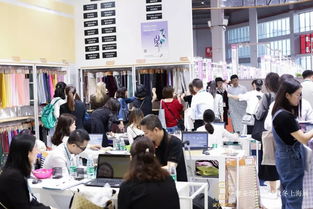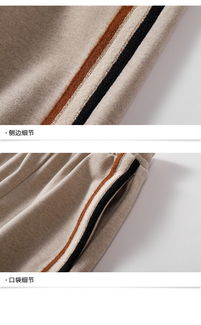The Role of National Textile Testing in Ensuring Quality and Safety
: The Role of National Textile Testing in Ensuring Quality and Safety,Abstract: Textile testing is a crucial aspect of ensuring product quality and safety for the textile industry. This paper discusses the significance of national textile testing, highlighting its role in identifying defects, ensuring compliance with standards, and preventing hazardous materials from entering the market. The importance of regular and rigorous testing is emphasized, as it helps to maintain consumer trust and protect the interests of both manufacturers and consumers. Additionally, the paper explores the benefits of adopting internationally recognized testing methods and the potential impact of technological advancements on textile testing practices. Overall, this research highlights the critical role of national textile testing in promoting sustainable development and ensuring the well-being of all stakeholders involved in the textile industry.

Introduction: The textile industry is a crucial sector in many countries. It employs millions of workers worldwide, provides essential materials for clothing, home furnishings, and more, and plays a vital role in the economy. However, as with any industry, there's always a need to ensure that the products being produced meet high standards of quality and safety. That's where national textile testing steps in. This article will explore how such testing helps maintain product integrity, prevent consumer harm, and support sustainable development in our textile-intensive world.
Types of Textile Testing Textile testing can be broadly categorized into three main types:
- Dyeing and Printing Tests: These tests assess the quality of dyed and printed fabrics, looking at colorfastness, wash fastness, and other factors. For example, a study by the European Commission showed that colorfastness testing significantly reduces consumer complaints about faded or damaged clothes.
- Fabric Tests: These tests measure the strength, elasticity, and other physical properties of fabrics. For example, the American Society for Testing and Materials (ASTM) offers a range of standards for measuring these properties in various textile categories like polyester blended fabrics.
- Finishes and Coatings Tests: These tests evaluate the performance of coatings on fabrics, including antibacterial, fire-resistant, and water resistance properties. A notable example is the FDA's testing protocols for flame-retardant chemicals used in textiles, which aim to reduce the risk of accidents during fires.
Benefits of Textile Testing Textile testing not only ensures product quality but also has several benefits:
- Consumer Protection: By identifying potential issues with textiles, such as harmful chemicals or poor quality materials, consumers can avoid purchasing products that may cause health problems or damage their garments.
- Market Competition: Companies must adhere to rigorous testing standards to compete effectively in the market. Failing to do so could lead to legal repercussions, damage brand reputation, and loss of market share.
- Environmental Sustainability: As consumers become more conscious about environmental impact, companies are increasingly required to test for eco-friendly materials and processes. Textile testing can help identify ways to minimize the use of non-renewable resources and promote greener production methods.
- Industry Standardization: National textile testing standards serve as a benchmark for all industries within a country to meet minimum requirements. This standardization ensures consistency across different manufacturers and helps to build trust in the industry.
Case Study Take the case of the Chinese textile industry, which has been undergoing significant transformation in recent years. According to data from the World Trade Organization (WTO), China was one of the largest exporters of textiles in the world until 2015. However, amidst concerns about labor rights and environmental degradation, China has implemented stricter regulations and increased testing requirements for its textiles. This shift has led to an increase in the cost of manufacturing, but it has also resulted in a cleaner and fairer industry. Companies that fail to meet these new standards risk facing penalties or even losing their licenses to operate in the Chinese market.
Conclusion: Textile testing plays a critical role in maintaining quality and safety, protecting consumers, promoting sustainability, and supporting economic growth. As the global textile industry continues to evolve, so too must the regulatory frameworks in place. It is essential for countries to invest in research and development of new testing methods and technologies to stay competitive and meet the evolving demands of their markets. In the end, it is through responsible testing practices that we can build a safer, more sustainable future for ourselves and generations to come.
随着国内经济的快速发展,纺织品作为人们日常生活中不可或缺的消费品,其品质和安全越来越受到人们的关注,为了确保纺织品的质量和安全,国产纺织品检测工作显得尤为重要,本文将围绕国产纺织品检测的主题,从多个方面进行深入探讨。
国产纺织品检测的重要性
- 保障消费者权益:通过严格的纺织品检测,可以确保纺织品符合国家安全标准和质量要求,保障消费者的权益。
- 促进产业发展:国产纺织品检测是推动国内纺织品产业健康发展的重要手段。
- 提升品牌形象:通过高质量的纺织品检测,可以提升企业的品牌形象和信誉。
国产纺织品检测的主要内容和方法

国产纺织品检测主要包括纤维含量检测、化学成分分析、微生物检测、环保性能检测等多个方面,纤维含量检测是衡量纺织品质量的基础指标,化学成分分析可以了解纺织品的化学性质和成分组成,微生物检测可以确保纺织品在生产、加工、运输等过程中的卫生安全,环保性能检测则可以关注纺织品的环保性能和可持续性。
方法
(1)纤维含量检测:采用先进的纤维含量测试仪器,对纺织品纤维含量进行精确测量。 (2)化学成分分析:通过化学分析方法,对纺织品的化学成分进行测定和分析。 (3)微生物检测:采用微生物检测技术,对纺织品在生产、加工、运输等过程中的卫生安全进行检测。 (4)环保性能检测:采用环保性能测试仪器,对纺织品的环保性能进行评估和监测。
国产纺织品检测案例分析
-
某品牌纺织品检测过程 某品牌在纺织品生产过程中,严格按照国家标准进行检测,确保产品质量和安全,在纤维含量检测方面,采用了先进的纤维含量测试仪器,对每一批次的纺织品纤维含量进行精确测量,确保产品质量符合国家标准,在化学成分分析方面,对纺织品的化学成分进行了全面分析,确保产品的成分符合国家标准和客户需求,在微生物检测方面,采用了专业的微生物检测技术,对纺织品在生产、加工、运输等过程中的卫生安全进行了严格把关,该品牌的产品获得了消费者的高度认可和好评。
-
某地区纺织品质量监管情况 在某地区,政府加强了对纺织品质量监管的力度,建立了完善的纺织品质量监管体系,该地区对纺织品生产企业进行了全面的质量检查和监督,确保了纺织品的品质和安全,该地区还建立了完善的纺织品检测机构,对纺织品的纤维含量、化学成分、微生物、环保性能等多个方面进行了全面检测,通过严格的检测和监管,该地区的纺织品质量得到了有效保障,消费者对纺织品的信任度得到了提高。
国产纺织品检测是保障纺织品品质和安全的重要手段,通过严格的检测和监管,可以确保纺织品符合国家安全标准和质量要求,提升品牌形象和信誉,也可以促进国内纺织品的健康发展和产业升级,随着人们对纺织品品质和安全的重视程度不断提高,国产纺织品检测工作将会越来越受到重视和关注。
Articles related to the knowledge points of this article:
Exploring the World of Quality Textiles with Jia Tien Textiles
The Evolution of Kung Fu-inspired Knives and Their Influence on Textile Design
Top Bedding Sets for Textile Brands
Crafting Your Personalized Fabrics:A Guide to Simple DIY Textile Projects



